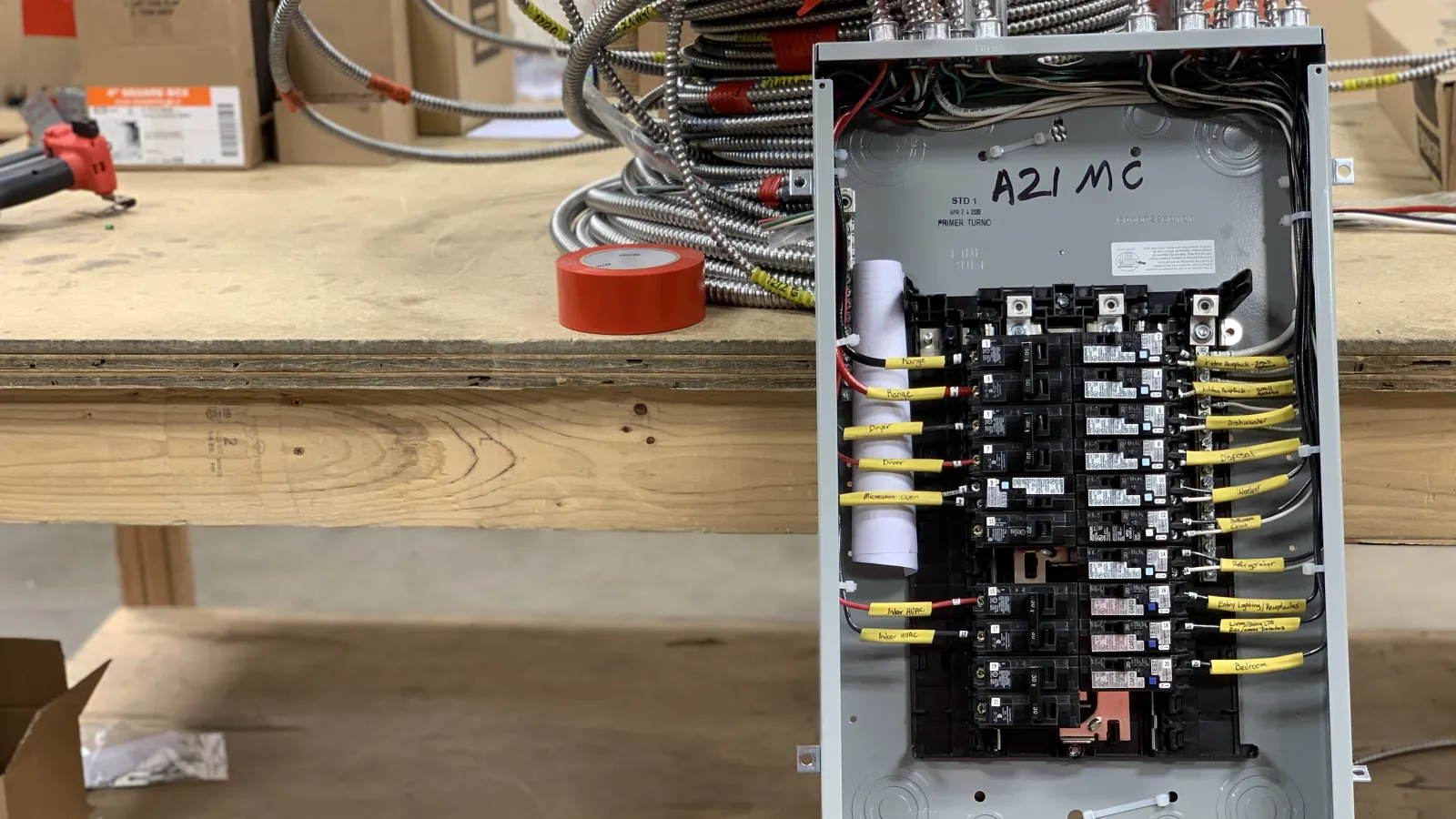What Are Federal Pacific Electrical Panels or Breaker Boxes?

As long as the power is on, people typically feel content
with how their electrical systems are operating. However, some electrical
systems, such as those including Federal Pacific Electric (FPE) panels,
specifically the Stab-Lok breakers, may endanger the safety of both homes and
their inhabitants. Popular in the mid-20th century, the high failure rates of
Federal Pacific panels are now recognized for the potential safety risks they
pose. Consequently, homeowners in the Atlanta metro area need to be able to
identify whether or not they have FPE breakers and understand why an electrical panel
upgrade may be essential.
Signs of FPE Panels in Your Atlanta-Area Home
Outages due to storms or minor electrical problems typically prompt homeowners' visits to the electrical panel or breaker box. Other common times to upgrade or assess electrical panels occur in tandem with home improvements or new appliance installations. Given the problematic history of Federal Pacific panels, now is the time to confirm what kind of panel or breaker box is carrying electricity throughout your home. Here are three tips for identifying whether or not you have a Federal Pacific Stab-Lok panel:
- Check
the logo: On the panel door, you may see a "Federal Pacific
Electric" logo, simply the letters "FPE" or possibly "Stab-Lok."
- Examine
the breaker design: In Stab-Lok breakers, the breaker has a unique
"stab" design, instead of a clip or hook, which slots the breaker into the
panel.
- Consider the age of your home: Between the 1950s and 1980s, there was a significant amount of suburban development in Atlanta and surrounding areas including Roswell, Marietta and Woodstock. Toward the end of this period, reports of safety issues and investigations into the reliability of Federal Pacific Electrical panels resulted in a decline in their use. Consequently, new installations or upgrades that happened in the late 1980s or after were less likely to utilize this type of panel in the electrical system.
Why Should I Be Concerned about the Breakers in my Federal Pacific Panel?
The circuit breakers in your electrical panel ensure that
the amount of electrical current distributed through your home's wiring runs at
a safe level. In the event that more amps or electrical current flow through
than the wires are rated for, the result can be excess heat, which may lead to
overheated systems and even fires. Fortunately, circuit breakers help prevent
such risks by limiting the amount of current running through the wires and
cutting power if the flow reaches unsafe levels.
Breakers are designed to shut off (or "trip") when they detect a short circuit - a problem that occurs when electricity flows where it normally wouldn't due to faulty wiring, problem outlets or another system issue. This alternate pathway for the current can cause a surge that results in overheating and a greater risk of fire.
If the breakers in your electrical panel are operating correctly, they should be aware of any sudden electrical surges and immediately stop the flow of electricity, thereby protecting your home from potential dangers. However, breakers that are repeatedly tripping may indicate a problem with your electrical system. Unfortunately, the potential for these malfunctions is even greater with breakers in FPE panels.
Historically, FPE breakers, especially the ones in the Stab-Lok series, have been a source of multiple problems for homeowners. In fact, as highlighted at NBCNews, these breakers may be responsible for thousands of home electrical fires each year. From personal injury to property damage to insurance acquisition, the greater failure frequency of these Federal Pacific panels makes them a serious concern. To ensure the safety of your home and loved ones, turn to a licensed electrician near you to investigate your electrical panel and either fix the problem or replace the FPE panel if needed.
The Unique Risks of Federal Pacific Panels in Older Homes in Atlanta and Marietta
In both the Atlanta and Marietta areas, a significant number of homes were built during the period in which FPE panels were widely used. While some homes may have undergone electrical panel upgrades since those years, others may still have these original FPE panel systems installed. Even in homes where renovations have occurred, outdated electrical systems may still be present. If you live in neighborhoods with older homes or aren't exactly sure of your home's improvement or service history, make time to identify your system or contact an electrical service specialist for an inspection or upgrade.
The Importance of Upgrading Your Federal Pacific Panel
Generally, older homes need more frequent professional electrical system inspections in addition to regular GFCI outlet testing. However, homeowners should also do their own investigations regularly throughout the year and contact electrical experts immediately if there is any sort of system issue. Identifying or suspecting a potential FPE panel is another reason for immediate service and replacement requests. An electrical panel upgrade offers multiple benefits:
- Increased
Safety: Modern electrical panels are designed to meet current NEC
standards, which are updated regularly to ensure electrical system
safety and support fire and other hazard prevention in the home. These
updates address features related to new technological advancements as well
as system concerns like circuit overload protection, grounding, and GFCI
& AFCI requirements. In short, replacing a Federal Pacific panel or
another outdated breaker panel with a replacement system helps reduce the
risk of electrical fires, power disruption and other dangers to personal
well-being and property.
- Insurance
and Home Value: To many insurance companies, covering homes with
outdated FPE panels is too risky given all of their known problems and the
frequency with which these problems occur. In addition to ensuring
insurance coverage, upgrading your electrical panel is a home improvement
investment that can add value to your property or increase its appeal to
buyers. Given how infamous FPE panels are in terms of safety and operation
failure, home inspectors are sure to be on the lookout for this feature
during any required inspections.
- Improved Performance: With the development of different energy sources and increasing demands for power in today's homes, new panels provide greater capacity in comparison with older electrical panels. To ensure that your home offers power in as safe and consistent a manner as possible, improve the performance of your entire electrical system when you replace your FPE panel or other older model.
Professional Electrical Panel Inspection and Replacement in Atlanta and Marietta
If you suspect your home has an FPE panel or have any other
electrical concerns, act now to protect your home and loved ones by contacting
a licensed electrician in the Atlanta area! Electrical experts, like the Snappy
Services professionals, can determine if an electric panel replacement is
necessary, discuss upgrade options that align with current industry standards
and codes or provide recommendations regarding necessary repairs. An award-winning
home services provider, Snappy Services is here to assist homeowners in the
Atlanta area with Federal Pacific electrical panel inspections and
replacements, as well as any other electrical, plumbing or HVAC needs. Contact us today!

